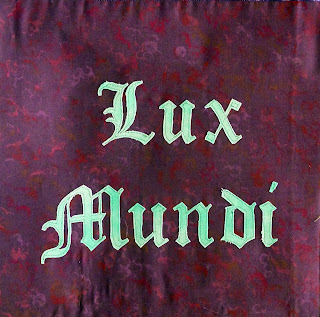Once again, I'm very late to the pouch party. The pouch fabulousness on Flickr is just amazing, so inspired by things like
this jaw-dropping coolness, I decided to make a pouch. I like the little tuck things on the green pouch, they remind me of the superb illusion quilts by Caryl Bryer Fallert like
this and
this and
this.
I didn't really have instructions for making a pouch or doing tucks, but I knew I wanted my tucks to nose up against one another. I wanted one side of the tuck to be brightly colored (I know, surprising) and the other side to be the muslin that I'm using for the background. So I cut a few strips of color 1.25 inches wide (finish at 3/4), and a few strips of muslin at 2 inches wide (finish at 1.5) reasoning that the muslin should be twice as wide as the color so that there would be enough to serve as the back side of the tuck and the background.
If that made no sense, don't worry, that is the right math if you want your tucks to touch noses with each other. So I assembled my two pouch-sides-with tucks and tacked them down. Here's one side:
Sadly, as you can see, when pulled over, 3/4 inch tucks are too big for the height of my fabric. Everything just pulled up really bad. I realized I should have made skinnier tucks or made the pouch taller. In order to salvage these blocks, I went ahead and ripped out the stitches holding the tucks down in the middle and just flipped them over at the top. Here are pictures of both sides.
After all that though, I decided the tucks were too big and the panels too big for the pouch I had envisioned. So I set them aside to be used for something else, and started fresh. For the second try, I decided that I would have 1/4 inch finished tucks which would mean cutting my colored strips at 3/4 inches. I noticed that the finished size of my first colored strips was the same as my cut size for my second strips, so I thought I'd just use the finished sizes from the first time to cut all my second strips. Alas! That was
not the right math! 3/4" cut colored strips did give 1/4" finished strips but 1 1/2" cut strips (the finished size from above) gave 1" finished strips! In order for my tucks to have touching noses (as in the second picture above), the muslin strips should finish at twice the finished width of the colored strips, in this case 1/2 inch. Therefore, my muslin strips should have been cut at 1" instead of 1 1/2". I was so aggravated, I had very nice tucks but they didn't touch noses! To compensate I had to slice my pieced pouch-sides (both, because of course I sewed all the tucks before I noticed) between each tuck and sew the pieces back together, effectively removing the extra half inch. This made all my tucks touch noses, but also made for tons of bulk behind the tucks. It was also hard to sew the pieces back together with all the tucks in the way so some of them didn't turn out quite right.
I then added some iron-on interfacing to the back and did some free-motion stitching. The pieces were kind of hard to hold onto since they are pretty small, and the interfacing didn't glide very smoothly and made un-ironable wrinkles. Incidentally, as a result of this project and the
Visions of God quilt, I'm feeling pretty done with interfacing. After adding a strip of color which would later become the pouch bottom and choosing a lining fabric, I was ready to assemble the pouch.
 |
| Back Side |
 |
| Front Side |
 |
| Fun Frog Lining! |
Actually assembling the pouch was fairly straightforward, when I got a little confused I just referred to the assembly instructions in this
easy-to-follow tutorial from Make it Perfect. I did learn that if you wish to topstitch around the zipper edges (to minimize lining getting caught in the zipper), it's better to to it immediately after attaching the lining/sides to the zipper rather than after the whole thing is assembled. Also, it was tough attaching the zipper to the area where the giant bulk of tucks was.
I think the final pouch turned out ok for a first attempt, but would definitely classify this as "needs improvement." Better ones are in the works!























































